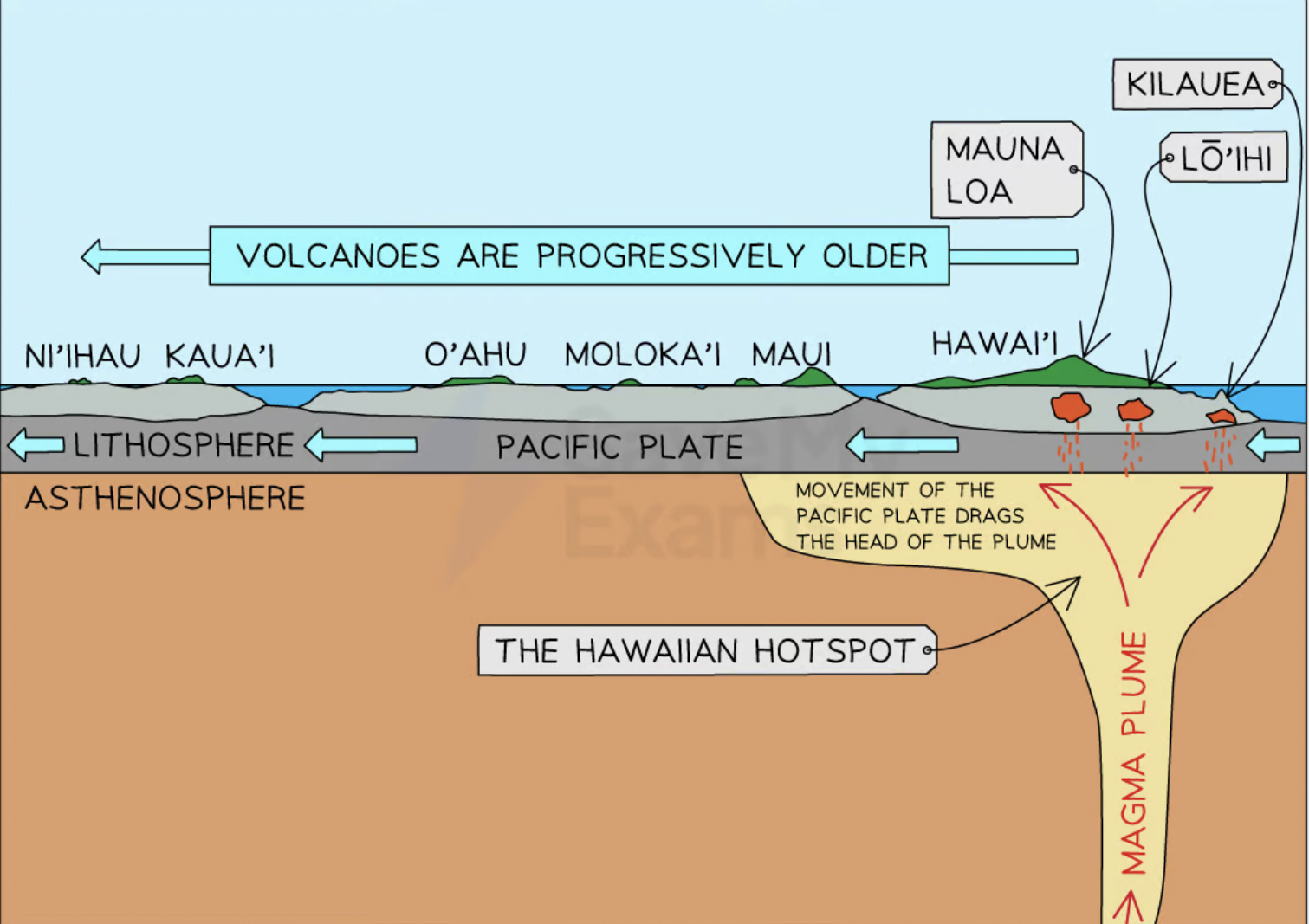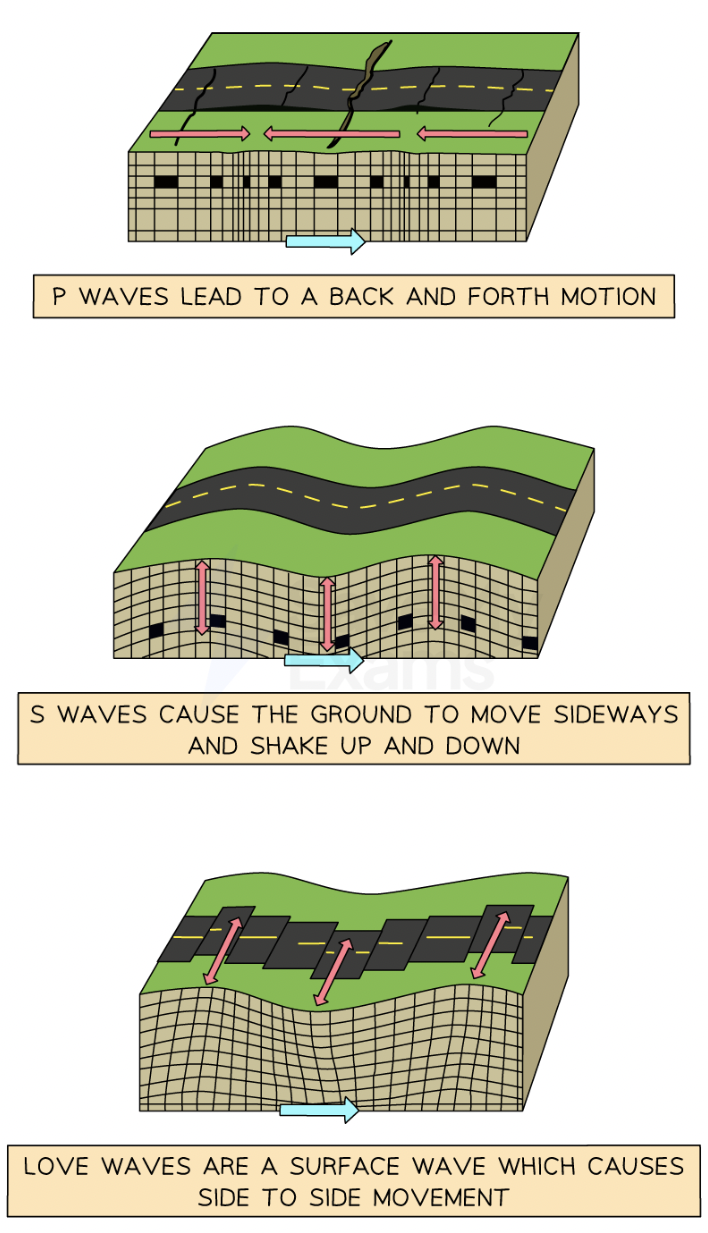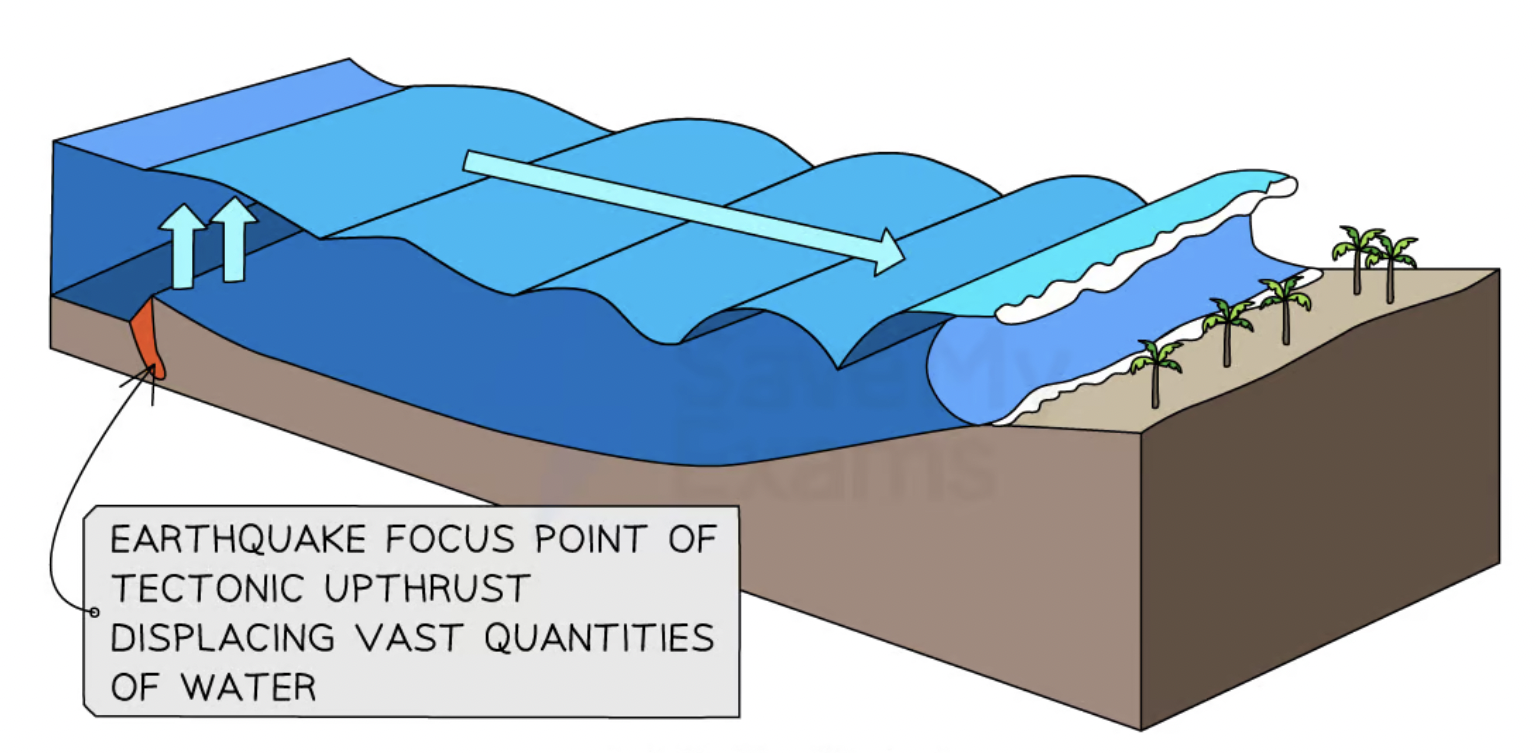EQ1- why are some locations more at risk from tectonic hazards?
1/17
There's no tags or description
Looks like no tags are added yet.
Name | Mastery | Learn | Test | Matching | Spaced |
|---|
No study sessions yet.
18 Terms
Intra-plate earthquakes
Can occur anywhere- caused by:
tectonic stresses causing ancient fault lines to reactivate
plates moving over a spherical surface, causing zones of weakness
e.g. 2011 Virginia Earthquake
Hotspot volcanoes
Occur over stationary magma plumes (columns of rising magma) in the asthenosphere.
Tectonic plate moves over the plume leading to the volcanic island.

How are earthquakes distributed?
Occur close to a plate boundary- convergent + conservative
’Ring of Fire’ around Pacific Ocean- 70% occur here
Intra-plate earthquakes may happen around hotspots/ old fault line
How are volcanic eruptions distributed?
Occur near plate boundaries- convergent+ divergent
75% occur around the Ring of Fire
Can be found at hotspots in the middle of plates e.g. Hawaii
How are tsunamis distributed?
70% occur around the Pacific Ocean ‘Ring of Fire’
caused by tectonic activity- convergent boundaries
high strength (20m+ water height) around SE Asia, Japan, coast of Chile
3 plate boundaries
Plate boundary: where tectonic plates meet
Divergent: plates moving apart
aka. constructive
Convergent: plates moving together
aka. collision + destructive
Transform: plates move past each other or in the same direction at different speeds
aka. conservative

Plate movement situations
O- oceanic plate
C- continental plate
Earth’s structure
Crust
2 types- continental (thicker + less dense), oceanic (thinner + more dense)
-Moho: boundary between the crust + mantle
Mantle
2 layers- lithosphere: rigid layer on top, together with the crust + asthenosphere: semi-molten, moves under high pressure
-lower mantle is denser+hotter due to high pressure, keeping it solid
Core
Made of outer core (semi-molten liquid made of iron+steel) and inner core (solid made of compressed iron)
The development of plate tectonic theory
1912 Continental drift: continents had once been joined
evidence: fossil evidence of same species on diff continents, glaciated landscapes had once been 1 ice sheet, ancient rock found in diff continents
1930s Convection: heat from radioactive decay in core moves upwards to mantle.
This creates convection currents (magma rises, cools, then sinks repeatedly) which push up into spreading mid-ocean ridges (ridge push).
1960s seafloor spreading: palaeomagnetism (changes in magnetic field of earth) provides evidence the sea floor gradually moved apart at a mid-ocean ridge.
Lava cools+solidifies with minerals lining up with magnetic field- direction of minerals on either side of fault line is a mirror image.
Subduction + slab pull: convection currents drag overlying lithosphere towards each other. Subduction occurs where a heavier denser plate subducts under a lighter less dense plate.
As oceanic crust cools, it becomes denser+thicker, + gravity forces lithosphere down into subduction zone. As it sinks, it drags the plate with it (slab pull).
Processes at convergent (destructive) plate margins
Ocean-continental
Denser, heavier oceanic plate subducts under continental- this forms deep ocean trenches in subduction zone e.g. Mariana trench with Pacific subducting under Philippine plate
-narrow area where earthquakes occur is the Benioff Zone
C-C/ O-C
Plates of similar density push up against each other and are forced upwards, forming fold mountains e.g. Himalayan mountain range (Indian+Eurasian plate)
O-O
The heavier oceanic plate subducts- form deep ocean trenches + island arcs (series of volcanic islands) e.g. Caribbean
submarine eruptions leads to crust building up above sea level
Processes at constructive (divergent) plate margins
O-O
Magma from mantle rises through, forming new crust e.g. mid- Atlantic ridge
C-C
Magma from mantle rises through, forming a rift valley e.g. East African Rift Valley
Processes at conservative (transform) plate margins
Rough edges of plates become stuck + pressure builds- plates eventually snap past each other
-friction caused by this causes earthquakes
e.g. San Andreas Fault (Pacific + North American continental plates)
How do physical processes impact on the magnitude?
Weaker+softer rock causes more ground-shaking as they’re more unstable.
At divergent boundaries
earthquakes are mild + shallow
eruptions tend to be small + effusive(gradual)
eruptions are of basalt lava: high temp, low gas content, low viscosity (thin)
At convergent boundaries
friction + pressure build up in Benioff zone (area with subduction zone where most friction builds up) causes strong earthquakes
eruptions are explosive as the magma forces its way to the surface
rhyolite lava eruptions: high gas content, high viscosity, low temp
At conservative boundaries
plates sticking can cause significant build up of pressure + powerful earthquakes
Types of earthquakes
P-waves(primary): caused by compression, fastest, travels through solids+liquids, causes backwards+forwards shaking, least damaging
S-waves(secondary): slower than P waves, only travels through solids, sideways motion, more damaging
L-waves(love): surface waves, slowest, move side to side, most damaging

Earthquake hazards
Primary
Ground shaking
Crustal fracturing: movement causes Earth’s crust to crack
Secondary
Landslides+avalanches: movement of the Earth may trigger the collapse of material down steep slopes
Liquefaction: shaking causes particles in the ground to move further apart causing them to act like liquid rather than solid
Flooding: caused by tsunami
Volcanic hazards
Primary
Pyroclastic flow: mix of dense, hot, rock, ash + gases.
Lava flow: move slowly enough that they’re not a risk to human life but can reach over 1000°C
Ash fall: can travel many km, causing injuries, damage, death + transport disruptions
Gas eruptions: gases trapped in magma are released during an eruption, forming gas clouds, which are hazardous to health.
Secondary
Lahars: mixture of rocks, mud, water, which flow down the volcano. They’re fast flowing + destroy everything in its path.
Jökulhlaups: floods caused by a sudden release of water+rocks when glacial ice is melted by the eruption.
Main causes of tsunami
Happens when an earthquake occurs beneath sea bed.
as sea bed jolts, water is displaced + forced upwards creating a wave
as wave approaches land, they slow + wavelength becomes compressed, wave height increases
As the waves reach shore, a vacuum is created + water recedes rapidly out to sea leaving the seabed exposed.

Other causes of tsunamis
Underwater volcanic eruptions
Landslides which may be due to earthquakes + volcanic eruptions displacing the water